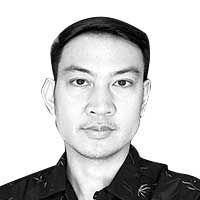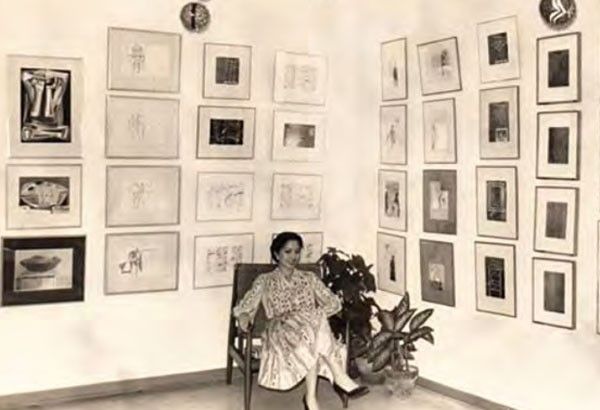H.R. Ocampo’s extraordinary opus


With one look, one can immediately state if the work is by H.R. Ocampo, or is inspired by the master. His visual idiom is one of the most recognizable in the landscape of Philippine visual arts: a field of interlocking shapes in a symphony of color whose juxtapositions accrue to slight, but resonating, resemblances to the natural world. His type of abstraction is said to be homegrown — original — as it doesn’t share the same lexicon as that of the pioneers of 20th century non-representational art, mainly the gestural, calligraphic approach of Pollock and the color field technique of Rothko.
An encounter with Ocampo’s work is always fraught with surprise, dramatic pictorial tension and a vivid response to the possibility of color and the exhibition, “Trove: The Coseteng Collection,” curated by Ramon Villegas and Lisa Guerrero Nakpil at Leon Gallery, provides a welcome avenue with which to experience the contribution of the National Artist afresh. Opening last Jan. 21, in time to ring in the Lunar New Year of the Rooster, the show features the collection of former Philippine Senator Dominique “Nikki” Coseteng of Ocampo’s works spanning from 1945 to 1978 — more than three decades worth of creativity punctuated with evocative sketches, emblematic works and grand productions.
The decision to bring together works of different scale, media and technique was a curatorial challenge, Villegas admits. “There was such a wealth of material, it was a real dilemma to figure out how to do them all justice,” he says. “In the end, it was decided to include both the famous oils and the works on paper in one show, to commemorate the long friendship between an artist and his patron. I thought it was only proper to have the drawings tell this story alongside the more renowned paintings.”
The inclusion of the drawings is a revelation, as these works showcase how the artist deliberated on his forms, not with the language of color and shape but with the spare articulation of the line. Ocampo’s sense of lineation is coherent, curvaceous and continuous, evoking, say, the contours of the nude in a mere three or four strokes. It’s also fascinating to know that even in drawings, Ocampo intuited his abstract shapes as laden with texture, mass and volume with their hatchings and cross-hatchings.
Certainly, it would be the works in oil that draw the more devoted attention as they feature some of the best displays of the master still in private hands. One of the highlights is “Stardust,” which was Ocampo’s entry to the Art Association of the Philippines’ 12th exhibition in 1959. One that the National Artist “had never wanted to part with while he was still alive,” according to Villegas, the work is a vibrating vision of a fauna in an intoxicating, otherworldly tropics with its flame-like leaves and petals as well as coils of striated landscape.
This work provides a contrast to the “true” abstraction of “Votive Form,” which is closer to Ocampo’s probably most famous work, “Genesis,” which also serves as the opening curtain of the Main Theater of the Cultural Center of the Philippines. This, along with other paintings, embodies, in the words of Ocampo himself, “how shapes, hues, values, textures and lines interact with one another in space, rather than capturing a photographic semblance of nature.”
It’s Ocampo’s sense of coloration that makes him a cut above the rest. “He had a basic understanding of chromo-luminarism and divisionist theory,” Villegas says. “It was also not only a matter of choice of hue, but his purposive use of color as a compositional element, directing the viewer’s eye movement through the use of complementation and juxtaposition. His characteristic shapes and forms, as well as texture and tone achieved by his skillful use of a palette knife and a blunt brush, also had a bearing on color values.”
“Trove: The Coseteng Collection” was long in the making, says Jaime Ponce de Leon, director of the gallery/auction house. “It involved agreeing and disagreeing with (Nikki Coseteng’s) ideas and connecting them with mine. It certainly involved patience and I had to have lots of it.” With the exhibition opening last Saturday, it would be prudent to also have patience while viewing the works, which is to say looking at them attentively, spending as much time with them as one can as they disclose their soaring magic in a moment of beauty, among the most eloquent of forms.
* * *
“Trove: The Coseteng Collection” will run until Feb. 4 at Leon Gallery, Eurovilla 1, Rufino corner Legazpi Sts., Legazpi Village, Makati City. For information, visit www.leon-gallery.com.



















